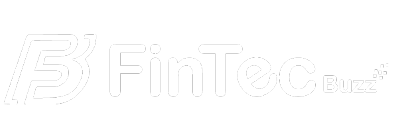Table of contents:
1. Reverse factoring
1.1 Overview:
1.2 Benefits:
1.3 Use Case:
2. Dynamic Discounting
2.1 Overview:
2.2 Benefits:
2.3 Use Case:
3. Inventory Financing
3.1 Overview:
3.2 Benefits:
3.3 Use Case:
4. Trade credit insurance
4.1 Overview:
4.2 Benefits:
4.3 Use Case:
5. Supply Chain Finance Platforms
5.1 Overview:
5.2 Benefits:
5.3 Use Case:
6. Conclusion
Supply chain finance is yet another pertinent aspect for today’s swift business operations of any organization, hence the need for efficient mechanisms for the implementation of SCF solutions. Thus, the proper utilization of SCF solutions can become the key to the B2B organization’s working capital management, risk minimization, and improved supplier relations. The following is a list of the five prominent SCF solutions highlighted in this blog to shape the current business environment.
1. Reverse factoring
1.1 Overview:
Factoring is when a company sells its invoices to a third-party financial institute and gets paid for the invoice immediately; reverse factoring, on the other hand, helps the supplier obtain payments for invoices from the third-party financial institute. This solution makes it easier for suppliers to enhance their cash flows to the extent required without affecting the buyer’s payment terms.
1.2 Benefits:
- Cash flow for suppliers will also be positive since the credit terms will help increase their sales.
- Strengthened supplier relationships
- Offer longer credit terms to the buyers.
- Less chances of supply chain disruptions
1.3 Use Case:
A case involves a leading electronics manufacturer that cooperates with a bank to organize the reverse factoring, which helps the small suppliers of the manufacturer to receive the money earlier, but the manufacturer receives the same attractive opportunities to pay for the purchases. This boosts up the monetary position of the supply chain and helps in the early delivery of parts.
2. Dynamic Discounting
2.1 Overview:
Dynamic discounting enables the procurement department to give early payment to suppliers in a return for a reduction in the invoice amount. This is an advantage to both the supplier and the buyer, as it helps both keep good cash flow and at the same time reduce cost.
2.2 Benefits:
- Better pay management for buyers
- Cost savings through discounts
- Enhanced supplier liquidity
- Strengthened supplier relationships
2.3 Use Case:
A global retailer applies dynamic discounting it targeting working capital management, which issues early payment discounts to its suppliers. The suppliers get fast access to some of their cash, while on the retailer part, there is a massive save on procurement costs.
3. Inventory Financing
3.1 Overview:
Inventory funding helps the business organization to leverage inventory in an attempt to acquire credit facilities. This solution enables companies to secure the required amount of money for acquiring more stocks or defraying some of the business expenses.
3.2 Benefits:
- Enhanced liquidity
- Lack of rigidity in managing the stocks of the business.
- Improved cash flow management
- >One of the main ways that firms achieve competitive advantage is through attaining superior inventory management status.
3.3 Use Case:
Inventory financing is best illustrated by the use of a wholesale distributor that uses the strategy of financing in order to successfully restock and balance increasing consumer needs. Due to the credit arrangement feature, the distributor obtains financing for new stock from the manufacturer or supplier, using the current stock as security to meet the customers’ demands.
4. Trade credit insurance
4.1 Overview:
Trade credit insurance is an insurance cover that keeps business risks of non-payment by buyers in check. This solution assists the firms to implement adequate measures to protect their accounts receivable as well as mitigate credit risk.
4.2 Benefits:
- Protection against bad debt
- Enhanced credit management
- Thus, there was higher confidence in extending credit.
- Improved financial stability
4.3 Use Case:
Trade credit risk is managed using trade credit insurance by a manufacturing firm that sells to clients in foreign markets. This insurance enables the company to offer credit confidently as it is assured that its receivable through offering favorable credit terms, hence catalyzing its move into new markets.
5. Supply Chain Finance Platforms
5.1 Overview:
Supply chain finance platforms are applications that help link buyers, suppliers, and or lenders along the supply chain. Such platforms automate the SCF processes and provide different funding opportunities and access to transaction data in real time.
5.2 Benefits:
- Increased transparency and efficiency
- Availability of several types of funds
- Real-time tracking of transactions
- Improved coordination among the entities that make up supply chains
5.3 Use Case:
An MNC implements a SCF platform, which allows for the consolidation of the company’s SCF operations. The platform gives a single location to work with reverse factoring, dynamic discounting, and inventory financing, making its supply chain procedure more competent and efficient.
6. Conclusion
The decisions concerning the implementation of appropriate supply chain finance solutions can be critical for the company’s sustainable effectiveness and, in many cases, financial stability. It indicates that the use of these main solutions of SCF, namely reverse factoring, dynamic discounting, inventory financing, trade credit insurance, and SCF platforms, makes a huge difference for better cash flow and for balancing risks and rewards with suppliers. Thus, further education on the new motivations of supply chain finance (SCF) will be important for sustaining competitive advantage in B2B markets as the SCF supply chain environment changes.
Stay Ahead of the Financial Curve with Our Latest Fintech News Updates!



